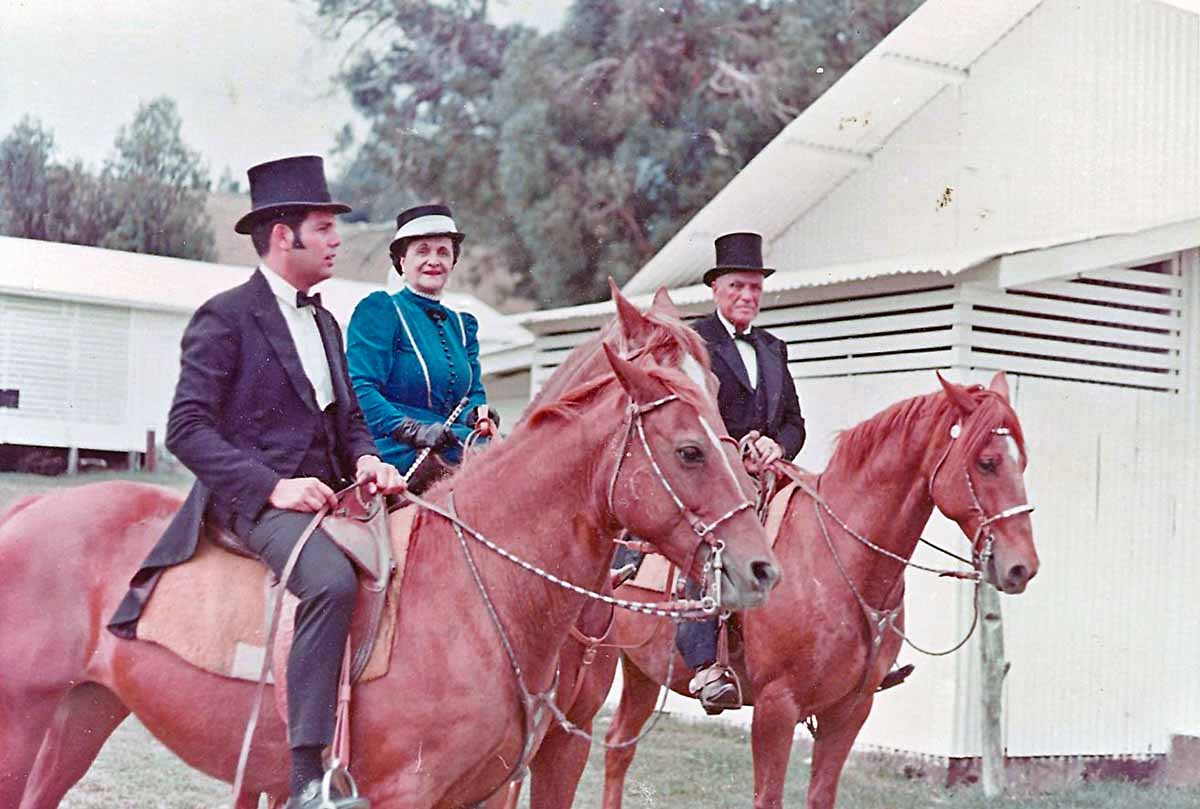
For most of the 20th Century, Anna Lindsey Perry-Fiske reigned as one of Waimea’s most esteemed residents. A remarkable woman with a small stature and very large heart, Anna was a true paniola who could pull on her boots to ride, rope, brand, and even slaughter cattle alongside the cowboys. At the same time, she was an elegant and gracious hostess, stunning in the latest aloha wear from Alfred Shaheen.
Her home, Anna Ranch in Waimea, is a testament to her extraordinary life. The parlor is arranged with koa furniture, cowhide rugs; a hand-cranked music box. In the kitchen (now gift shop) fine china is stacked in the cupboards, and a collection of ceramic horses is corralled on top. Silk kimonos hang in the closets beside Nudie’s of Hollywood cowgirl outfits and spangled hats with matching boots. The office walls are full of black & white photos: Anna on horseback in full pā‘ū regalia and lei, Anna in jockey’s racing silks, Anna on Brahma bull-back, Anna with celebrities on cruise ships and at gala affairs.
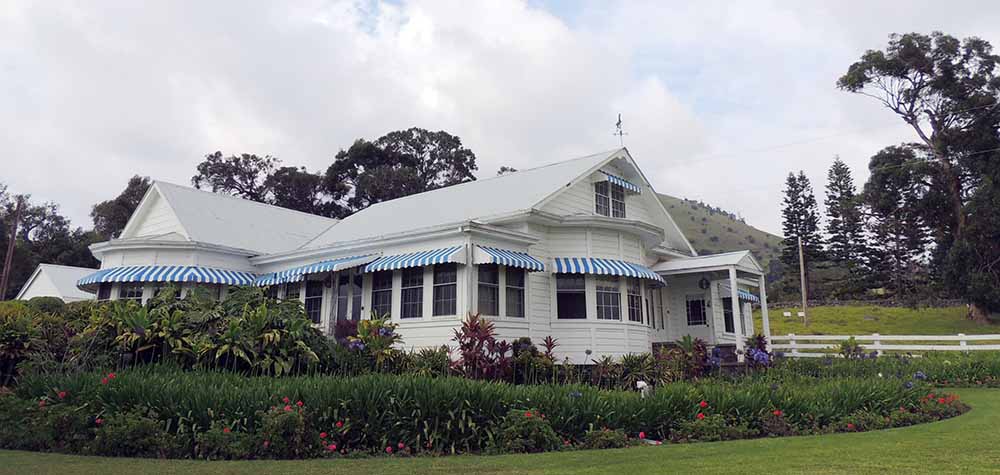
Anna’s story begins with the arrival of her great great grandfather James Fay, who came to Hawai‘i from England in the early 19th Century. He married Ka‘ipukai‘ikapuokamehameha Kahahana, an ali‘i woman from O‘ahu, and became known in the community as “Kimofe.” Governor Kuakini gave him a parcel of land for assisting with wild cattle and various business interests, and Kimofe and Ka‘ipukai made a home for themselves. In 1830, their daughter Mary Ka‘ala Fay was born.
Kimofe proved to be a very successful businessman, selling beef, hides and tallow, and purchasing acres of forested land where he built a sawmill, and a sheep ranch. He passed his estate to Mary upon his death in 1858, and Mary (now Mrs. George Kynaston Lindsey) in turn left equal shares to her twelve children. Her oldest son, Thomas Weston Lindsey (Anna’s grandfather), became the cowboy foreman for Parker Ranch. He loved ranch life, and bought many of his siblings’ shares to create the sizeable Lindsey Ranch, which he eventually bequeathed in equal shares to his eight children.
In 1896 Thomas’ son, William Miller Seymour Lindsey, married a half-Hawaiian schoolteacher named Mary Leialoha Rose. Their daughter Anna was born in 1900, and learned to rope and ride alongside brothers Bill and Charles. Her mother, on the other hand, taught her the gentler arts of of pā’ū riding, in addition to needlepoint, homemaking and hostessing. Anna was skilled in all of them.
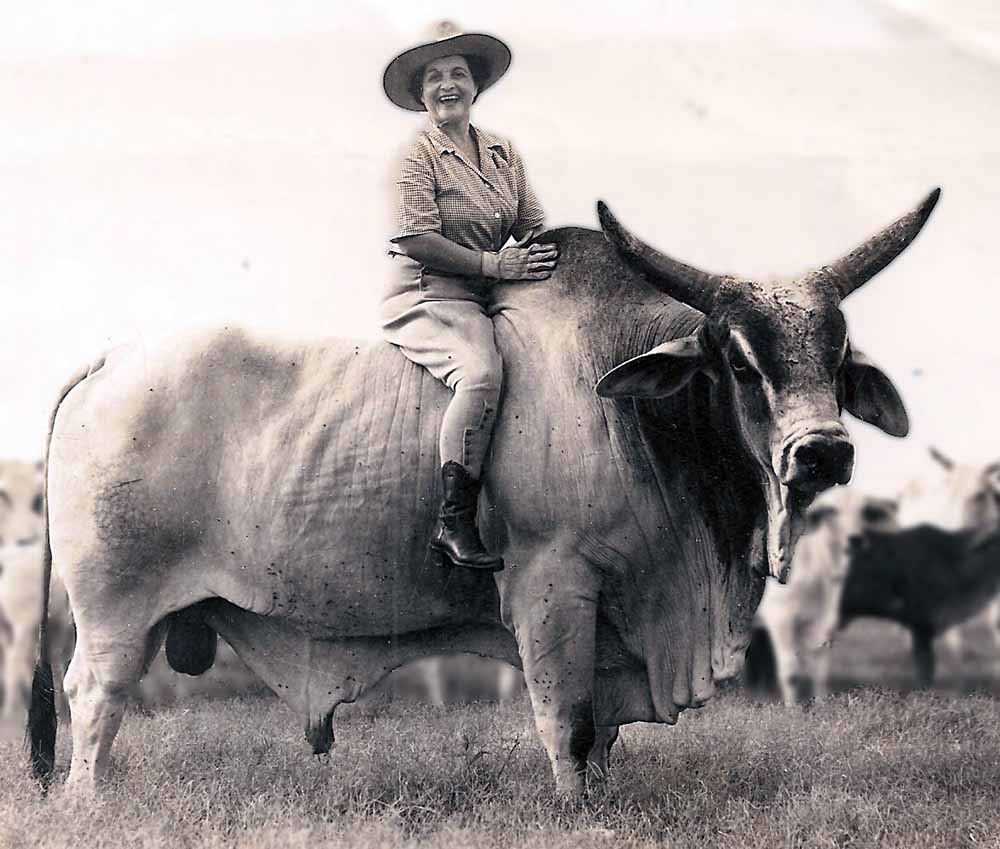
She attended a convent school on O‘ahu, and developed a strong faith that would see her though the hard times ahead. At the age of 19, she married a Chinese-Hawaiian man, Henry Lai Hipp of Hilo. During their 20-year marriage, she worked as the Park Commissioner for Hawai‘i County; and one of her most notable projects was the celebrity tree planting along Hilo’s Banyan Drive. She also started Lai Hipp Stables, and became one of Hawaii’s first female jockeys—training and racing her own horses.
In 1939, Anna returned home to help take care of her father, who had been struggling with a long illness. She found Lindsey Ranch nearing bankruptcy. Determined not to let it go, she decided to borrow money from Parker Ranch. With one full time ranch hand, “Bull” Awa‘a, Anna worked six days a week, mending fences, branding, and more. She was one of the first women in Hawai‘i to get a butcher’s license, and slaughtered her own cattle at what was now called Anna Ranch. During WWII, she entertained officers and nurses from nearby Camp Tarawa.
In 1943 she married James Lyman Perry-Fiske from North Kohala (who it’s said had hyphenated his last name with his paternal grandmother’s last name in 1933, when a different family member also named Lyman became somewhat of a black sheep). Both part-Hawaiian, both accomplished horse people and ranch people, the Perry-Fiskes gave the ranch, literally, new blood by introducing Brahma and Charolais breeds to the cattle stock. An accomplished pā‘ū rider, Anna represented Hawai‘i in the Pasadena Tournament of Roses and the Rose Bowl Parade, introducing pā‘ū riding to the world.
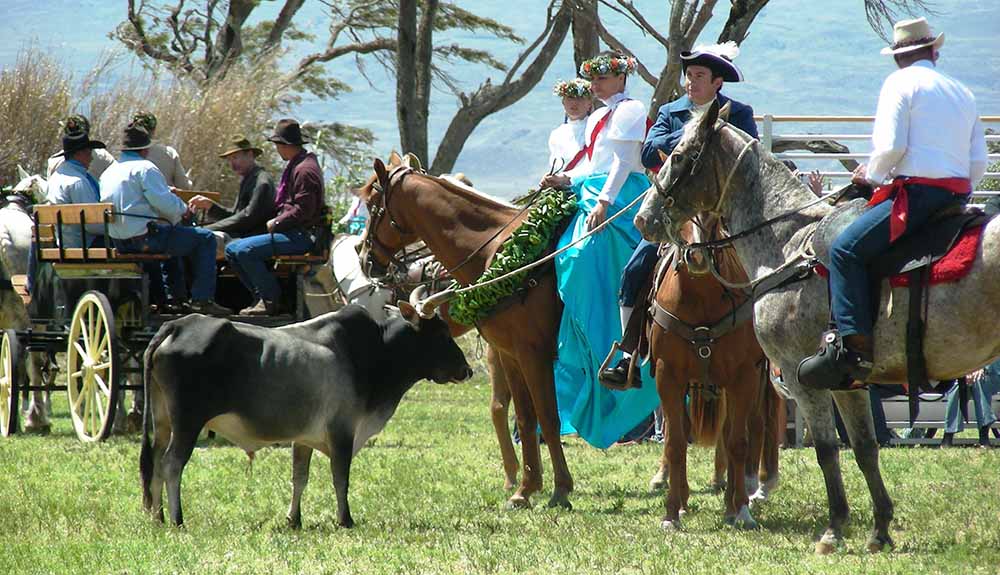
They also helped establish Anna Ranch as somewhat of a social center for Waimea, hosting lavish parties, lū‘au, and charity events. Anna hosted the “Old Hawaii On Horseback” festivities from 1965 to 1983, and choreographed the flamboyant pageants herself. Dozens of costumed riders paraded across the lawns: some dressed as historical characters like Captain George Vancouver, some bedecked with yards of lei and fluttering pā‘ū skirts.
It was the American Heart Association’s most lucrative fundraiser for several years, thanks to Anna. She also produced a hugely successful auction for Hawai‘i Preparatory Academy at the Mauna Kea Beach Hotel. And, she made significant contributions towards building the emergency room at Lucy Henriques Medical Center, among other investments in the community she loved.
When she died in 1995, Aunty Anna left her home to the community, as a living legacy that celebrates the history and culture of ranching in Hawai‘i. Thanks to the hard work by Dr. Momi Naughton and a dedicated team, Anna Ranch was named to the Hawai‘i State Register of Historic Places in 2005, and to the National Register of Historic Places in 2008.
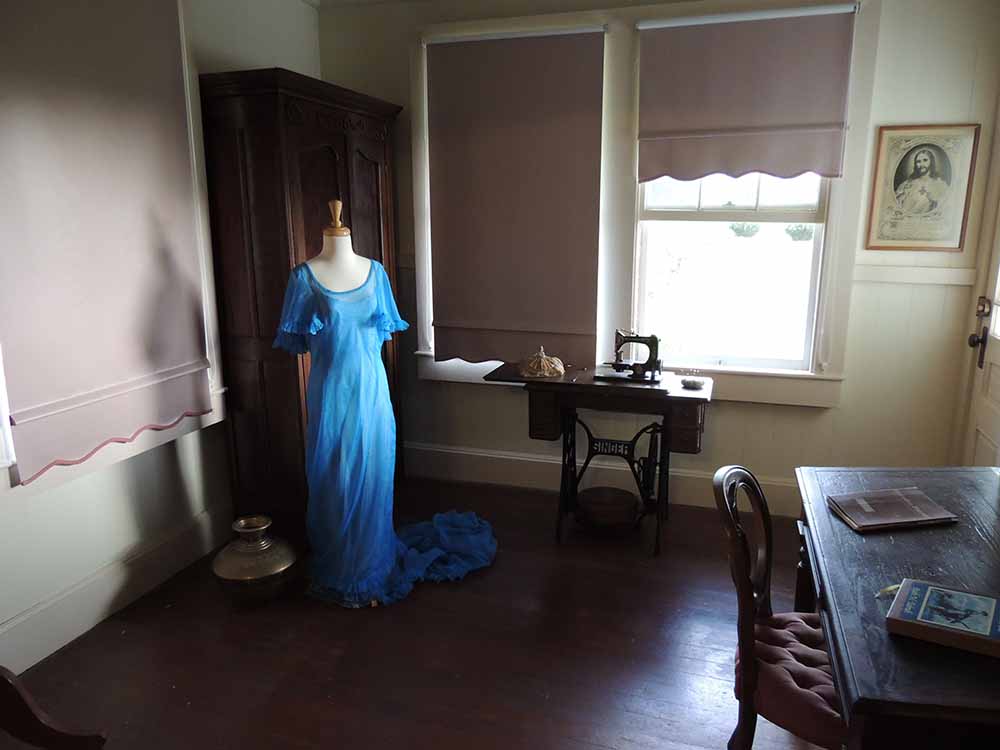
The present 3.48 acre Anna Ranch Heritage Center includes the ranch house and outbuildings, and—added in 2000—a tea house, public restroom building, paved driveway and parking lot. In the Gift Shop, visitors can purchase Anna’s biography, “Hawai’i’s Incredible Anna,” by Ruth M. Tabrah., plus locally-made gifts, logo items and more. Anna Ranch Heritage Center is available for tours on Tuesdays or Thursdays at 1 p.m., with advance reservations required. The property is also available to rent for private functions, weddings and social gatherings. Visit the Anna Ranch Heritage Center website for more information.
